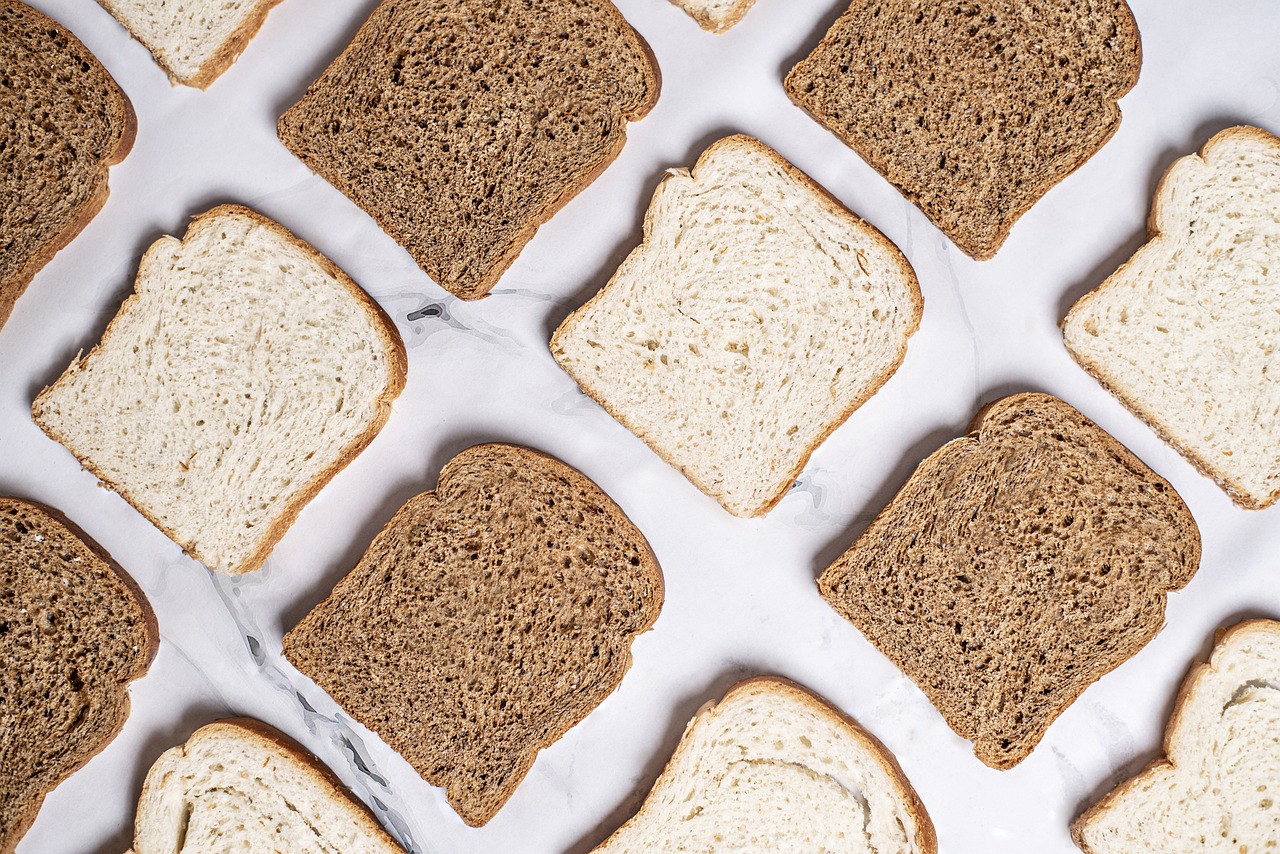Wheat Varieties , a staple food globally, is known for its versatility and nutritional richness. It comes in various forms, including traditional whole wheat, ancient grains like spelt, and einkorn, each offering unique health benefits. Whole wheat flour is commonly used in baking bread, muffins, and other baked goods due to its robust flavor and hearty texture.
Ancient grains like spelt and einkorn offer a glimpse into the past while providing modern-day health benefits. Spelt, with its nutty flavor and chewy texture, is often used in salads, soups, and pilafs. Einkorn, one of the earliest cultivated forms of wheat, has a rich, earthy taste and can be used in baking or enjoyed as a side dish.
The primary health benefits of different types of wheat are their nutritional composition. Whole wheat is a rich source of fiber, vitamins, and minerals, which promote digestive health, regulate blood sugar levels, and help maintain a healthy weight. Ancient grains like spelt and einkorn also offer unique nutritional profiles, with spelt being higher in protein and essential amino acids for muscle repair and growth, and einkorn being rich in antioxidants to combat oxidative stress and inflammation.
Incorporating whole grains into your diet can lower the risk of chronic diseases such as heart disease, diabetes, and certain types of cancer. By choosing minimally processed wheat varieties and embracing the diverse culinary possibilities, you can enjoy the nutritional goodness of wheat while indulging your taste buds.
Contents
- 1 Introduction
- 2 Different Types of Wheat (Wheat Varieties)
- 3 3. Spelt (Triticum spelta)
- 4 Nutritional Composition (Wheat Varieties)
- 5 Health Benefits of Wheat (Wheat Varieties)
- 6 Whole Wheat vs. Refined Wheat (Wheat Varieties)
- 7 Gluten Sensitivity and Wheat Allergies (Wheat Varieties)
- 8 Types of Wheat to Avoid (Wheat Varieties)
- 9 Impact on Blood Sugar (Wheat Varieties)
- 10 High-Fiber Wheat Varieties
- 11 Wheat and Heart Health(Wheat Varieties)
- 12 Weight Management (Wheat Varieties)
- 13 Wheat and Digestive Health (Wheat Varieties)
- 14 Organic vs. Conventional Wheat (Wheat Varieties)
- 15 Culinary Uses of Different Wheat Varieties
- 16 Conclusion
- 17 FAQs (Frequently Asked Questions)
Introduction
Wheat has been a staple food in human diets for centuries, providing essential nutrients and energy for civilizations. With advancements in agriculture and food processing techniques, wheat varieties have expanded, offering a diverse array of options to cater to different culinary preferences and nutritional needs. The development of high-yield common wheat varieties and preservation of ancient grains like spelt and einkorn have led to an unparalleled diversity of wheat options available to consumers today.
Food processing has also contributed to the accessibility and versatility of wheat products, from whole wheat flour to refined wheat products like white bread and pasta. Understanding the nutritional composition and health effects of these different wheat varieties is essential for making informed dietary choices and promoting overall well-being.
The nutritional composition of wheat varies depending on factors such as the type of wheat, growing conditions, and processing methods. Whole wheat retains the bran and germ, rich in fiber, vitamins, and minerals, while refined wheat products are lower in fiber and essential nutrients. Understanding these differences can help individuals make healthier choices, supporting their dietary goals. Whole wheat products also offer benefits such as improved digestion, better blood sugar control, and reduced risk of chronic diseases like heart disease and diabetes.
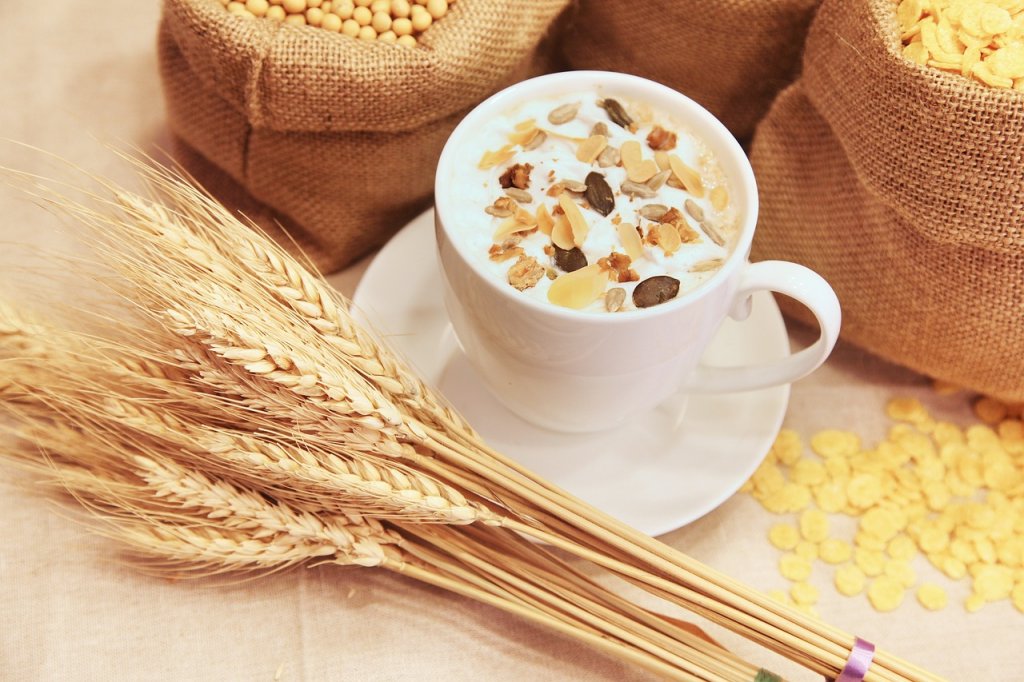
Different Types of Wheat (Wheat Varieties)
Wheat is a versatile grain with various types, each with unique characteristics and culinary applications. Common wheat, also known as bread wheat, is the most widely cultivated species globally, used for baking bread, pasta, and other baked goods due to its high gluten content.
Durum wheat, renowned for its firm texture and high protein content, is ideal for pasta, couscous, and bulgur. Spelt, an ancient wheat variety, is popular for its nutty flavor and nutritional benefits, used in baking, soups, and salads. Einkorn, one of the earliest cultivated forms, has a rich, earthy flavor and higher protein content, used in baking bread, muffins, and cookies.
Emer wheat, another ancient grain, has a chewy texture and slightly sweet, nutty flavor, used in soups, stews, and pilafs, adding depth and complexity to savory dishes. Each type of wheat offers a distinct flavor, texture, and nutritional profile, making it suitable for various culinary applications and dietary preferences.
1. Common Wheat (Triticum aestivum)
Common wheat, also known as Triticum aestivum, is a widely cultivated species in global agriculture and culinary traditions. It is a staple crop in countries like the United States, Canada, China, India, Russia, and Europe due to its versatility, adaptability, and nutritional properties. Common wheat is used in various culinary preparations, such as bread, pasta, baked goods, and other dishes. Bread is made with high gluten content, providing elasticity and structure to dough.
Pasta, made from common wheat, has a firm texture and al dente bite, making it a staple in many cuisines worldwide. It is also used in baked goods like cakes, cookies, pastries, and muffins.
Common wheat is a rich source of essential nutrients, including carbohydrates, proteins, dietary fiber, vitamins, and minerals. Whole wheat products retain their nutritional value, while refined wheat products may lose some of their value during processing. Whole wheat bread and pasta offer health benefits, including improved digestion, better blood sugar control, and reduced risk of chronic diseases like heart disease and diabetes.
Common wheat’s cultivation and trade have significant economic implications, contributing to the livelihoods of millions of farmers and supporting agricultural economies worldwide. Wheat production and trade play a crucial role in global food security, providing a stable source of calories and nutrition for billions of people. In summary, common wheat is a cornerstone crop in global agriculture and cuisine, valued for its versatility, nutritional value, and widespread availability.

2. Durum Wheat (Triticum durum)
Durum wheat, also known as Triticum durum, is a unique variety of wheat with high protein content, making it a staple ingredient in various dishes worldwide. Its high protein content provides essential amino acids for muscle repair, growth, and overall bodily function. Durum wheat is primarily used in the production of pasta, which maintains its shape and texture during cooking, resulting in satisfying and flavorful noodles.
Durum wheat is also a key ingredient in couscous, a traditional North African dish made from steamed and dried semolina. The firm, granular texture of couscous allows it to absorb flavorful sauces, spices, and ingredients, making it a versatile and nutritious component of many meals. Bulgur, another popular culinary product made from durum wheat, is a staple in Middle Eastern and Mediterranean cuisines.
Durum wheat offers essential nutrients such as carbohydrates, dietary fiber, vitamins, and minerals. Whole grain durum wheat products, like pasta and bulgur, retain the bran and germ, which are rich in fiber, B vitamins, and antioxidants, supporting digestive health and regulating blood sugar levels.
Durum wheat holds cultural significance in regions where it is cultivated and consumed. In Italy, pasta made from durum wheat symbolizes tradition, craftsmanship, and culinary excellence. Similarly, couscous and bulgur play integral roles in the culinary heritage of North Africa, the Middle East, and the Mediterranean, where they are enjoyed in various traditional dishes and festive celebrations.
3. Spelt (Triticum spelta)
Spelt, also known as Triticum spelta, is an ancient wheat variety with a unique nutty flavor and chewy texture. Originating in the Near East thousands of years ago, it is a popular ingredient in both sweet and savory dishes. Spelt flour, a healthier alternative to traditional wheat flour, is used in baking due to its lower gluten content, resulting in lighter texture and slightly denser crumb. It can be used in various baked treats like bread, muffins, cookies, and cakes, adding a distinctive nuttiness to each creation.
Spelt grains or spelt berries are often added to soups and stews to impart their hearty texture and enhance the overall flavor. When cooked, spelt grains become tender yet retain a satisfying chewiness, making them an excellent addition to hearty soups, comforting stews, and flavorful broths.
Salads are another way to incorporate spelt grains. Cooked spelt grains provide a hearty base for salads, offering a satisfying chewiness that pairs well with various vegetables, proteins, and dressings. Spelt is also rich in essential nutrients such as protein, fiber, vitamins, and minerals, which promote digestive health, regulate blood sugar levels, and contribute to a feeling of fullness and satiety.
Cultural significance is another reason why spelt holds cultural significance. In regions where it has been traditionally cultivated and consumed, such as parts of Europe and the Middle East, spelt holds historical and symbolic importance, representing heritage, tradition, and connection to the land.
4. Einkorn (Triticum monococcum)
Einkorn, also known as Triticum monococcum, is a significant ancient wheat variety with roots dating back thousands of years to the Fertile Crescent. Its rich flavor, nutritional benefits, and resilience make it a sought-after ingredient in culinary creations. Einkorn is one of the oldest known cereal grains, domesticated by early agricultural societies and serving as a staple food source for ancient civilizations.
Its distinct, earthy taste sets it apart from modern wheat varieties, making it a sought-after ingredient among chefs and food enthusiasts. Einkorn offers a range of nutritional benefits, including protein, fiber, vitamins, and minerals, including essential nutrients like iron, magnesium, and zinc. Its high protein content makes it a valuable component of a balanced diet, supporting muscle growth, repair, and overall bodily function.
Einkorn’s resilience and adaptability make it a sustainable choice for agricultural production, as it thrives in poor soil conditions and reduces the need for chemical inputs. Its fine texture and rich flavor enhance the taste and texture of baked goods, including bread, pastries, cookies, and pancakes.
In recent years, einkorn has experienced a resurgence due to growing interest in ancient grains and traditional foodways. Its unique flavor, nutritional benefits, and historical significance have sparked renewed interest among consumers, chefs, and farmers seeking to reconnect with heritage crops and sustainable agriculture practices. In summary, einkorn continues to captivate and inspire with its timeless appeal and unique attributes.
5. Emmer (Triticum dicoccum)
Emmer wheat, also known as Triticum dicoccum, is an ancient grain with a rich history dating back to the earliest agricultural civilizations. Originating in the Near East around 10,000 years ago, it played a crucial role in the diets of ancient civilizations like the Egyptians, Mesopotamians, and Greeks. Emmer wheat’s distinctive taste, characterized by a slightly sweet, nutty taste with hints of earthiness, adds depth and character to dishes, making it a favorite among chefs and home cooks.
The hearty texture of emmer wheat makes it ideal for creating satisfying and comforting meals. It is commonly used in various culinary preparations, particularly in soups and stews, where it provides substance and depth. Emmer wheat is also popular in pilafs, where it absorbs flavors from spices, herbs, and other ingredients, resulting in a flavorful and aromatic side dish.
Emer wheat offers a range of nutritional benefits, including protein, fiber, vitamins, and minerals. It is a good source of complex carbohydrates, providing sustained energy and promoting satiety. Additionally, it contains essential nutrients such as iron, magnesium, and zinc, contributing to overall health and well-being.
Cultural significance is another reason why emmer wheat holds cultural significance. It is deeply ingrained in the culinary heritage of countries like Italy, where it is used in traditional dishes like farro soup and farro salad. Emmer wheat’s historical importance and timeless appeal continue to inspire culinary creativity and innovation today.
Nutritional Composition (Wheat Varieties)
Wheat is a nutrient-dense grain that provides a variety of essential nutrients for overall health and well-being. It is composed of complex carbohydrates, including starches and dietary fiber, which are broken down into glucose during digestion. Protein is essential for building and repairing tissues, immune function, and hormone synthesis.
Whole wheat varieties typically have higher protein content compared to refined wheat products. Fiber is a crucial component of wheat, especially in whole wheat varieties. Wheat bran, found in the outer layer of the wheat kernel, is particularly rich in dietary fiber, which promotes digestive health by adding bulk to stool, facilitating bowel movements, and preventing constipation. Fiber also helps regulate blood sugar levels, aiding in diabetes management and overall metabolic health.
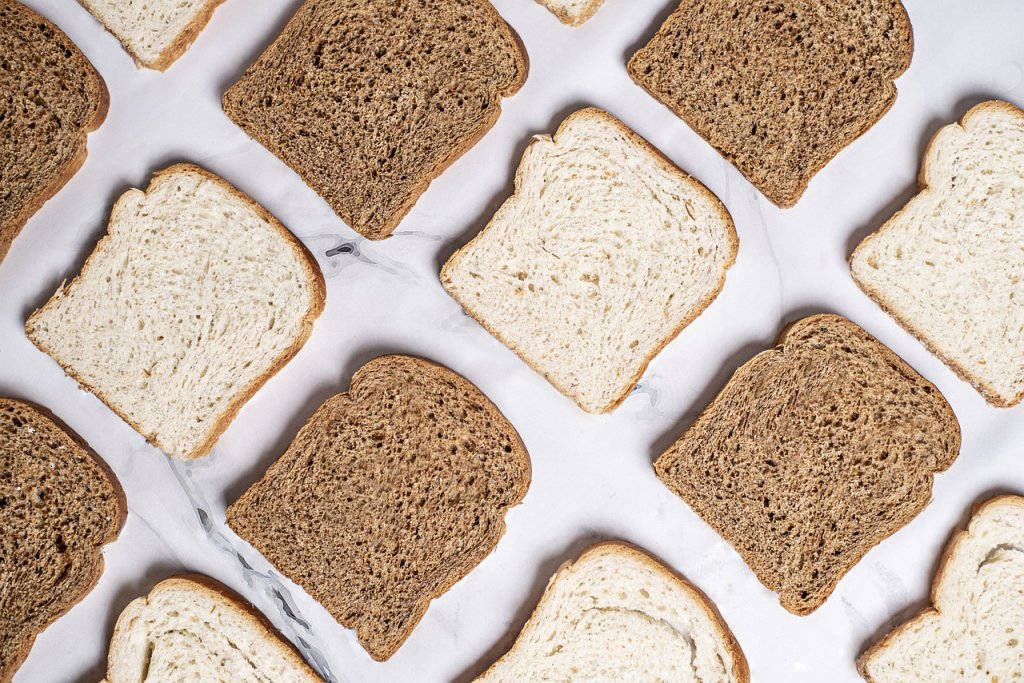
Wheat contains various vitamins, including B vitamins such as thiamine, riboflavin, niacin, and folate, which play essential roles in energy metabolism, nerve function, and cell growth and development. Whole wheat products retain more vitamins than refined wheat products, as the bran and germ are removed during the refining process.
Wheat is also a good source of minerals, including iron, magnesium, zinc, and phosphorus. Iron is necessary for oxygen transport in the blood, magnesium supports muscle and nerve function, zinc plays a role in immune function and wound healing, and phosphorus is essential for bone health and energy metabolism. Incorporating whole wheat products into one’s diet can provide the nutritional benefits of wheat while supporting overall health and well-being.
Health Benefits of Wheat (Wheat Varieties)
Whole wheat has a lower glycemic index (GI) compared to refined wheat products, such as bread, pasta, and cereals. This is due to the entire grain kernel, including bran, germ, and endosperm, slowing down digestion and absorption in the body. The fiber content in whole wheat also plays a significant role in lowering the GI, adding bulk to the digestive system and slowing down glucose release into the bloodstream. This helps regulate the body’s response to insulin, the hormone responsible for transporting glucose from the bloodstream into cells for energy.
Choosing whole wheat products over refined ones offers better blood sugar control. The slower and steadier increase in blood sugar levels prevents sudden spikes and crashes, promoting overall metabolic health and reducing the risk of insulin resistance and type 2 diabetes. Incorporating whole wheat into meals can provide health benefits of stable blood sugar levels, promote overall well-being, and reduce the risk of chronic diseases like diabetes. Overall, whole wheat is a beneficial addition to a balanced diet.
Whole Wheat vs. Refined Wheat (Wheat Varieties)
Whole wheat and refined wheat are two types of wheat that differ in their nutritional composition and health benefits. Whole wheat contains the whole grain, including the supplement-rich wheat and microorganism layers, which are rich in nutrients, minerals, cancer prevention agents, and dietary fiber, all of which contribute to better health. This makes it a better choice for overall wellbeing and prosperity.
The fiber content in whole wheat is particularly high, which plays a crucial role in improving stomach health and overall well-being. Fiber helps prevent clogging and increases regular solid waste, controls glucose levels, and reduces the risk of chronic diseases like heart disease and diabetes. Whole wheat products offer more significant stomach-related benefits compared to refined wheat products.
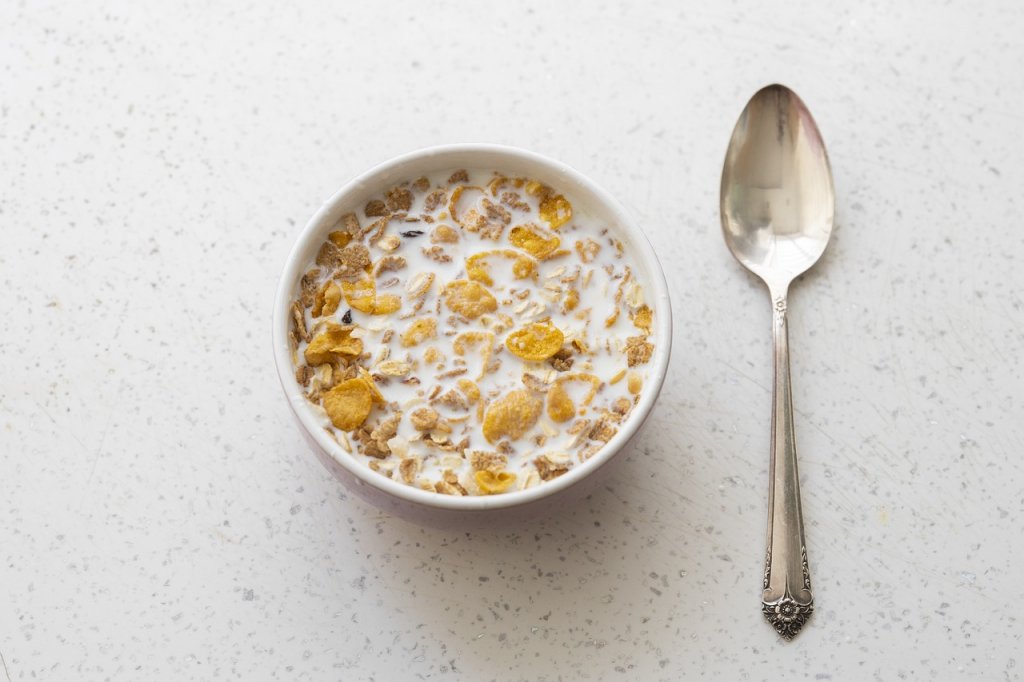
Refined wheat has a lower glycemic index (GI), which measures how quickly a starch-containing food raises glucose levels after consumption. This lower GI helps control glucose levels and reduces the risk of insulin resistance and type 2 diabetes. Whole wheat is also more nutrient dense, providing a higher concentration of essential nutrients per serving.
In summary, whole wheat is considered the better choice for overall health and well-being due to its preservation of essential nutrients, fiber content, lower glycemic index, and higher nutrient density. By incorporating whole wheat into one’s diet, individuals can enjoy better stomach health, improved glucose control, and reduced risk of chronic illnesses.
Gluten Sensitivity and Wheat Allergies (Wheat Varieties)
A few people might encounter unfriendly responses to wheat because of gluten responsiveness or wheat sensitivities. In such cases, consuming wheat-based items can prompt awkward side effects and possibly serious medical problems. Along these lines, it’s vital for people with gluten responsiveness or wheat aversions to stay away from wheat-containing food varieties and search out reasonable other options.
- Gluten Sensitivity:
Gluten responsiveness, otherwise called non-celiac gluten awareness (NCGS), is a condition wherein people experience unfriendly side effects subsequent to consuming gluten, a protein found in wheat and related grains like grain and rye. Normal side effects of gluten responsiveness incorporate bulging, stomach torment, the runs, weakness, and migraines. While gluten awareness doesn’t cause a similar digestive harm as celiac illness, it can in any case fundamentally influence personal satisfaction and generally speaking prosperity. - Celiac Disease:
Celiac sickness is an immune system problem wherein the ingestion of gluten prompts harm to the coating of the small digestive tract. This harm slows down the retention of supplements and can bring about a scope of side effects, including gastrointestinal issues, dietary inadequacies, exhaustion, joint torment, and skin rashes. The main treatment for celiac infection is severe adherence to a sans gluten diet. - Wheat Allergy:
Wheat sensitivity is a resistant intervened reaction to proteins tracked down in wheat. Dissimilar to gluten responsiveness and celiac sickness, which principally include responses to gluten, wheat sensitivity can set off hypersensitive responses to different wheat proteins. Side effects of wheat sensitivity can go from gentle to extreme and may incorporate hives, tingling, enlarging, trouble breathing, and hypersensitivity. - Sans gluten Alternatives:
For people with gluten responsiveness, celiac sickness, or wheat sensitivities, taking on a sans gluten diet is fundamental for overseeing side effects and forestalling complexities. Luckily, there are numerous without gluten choices accessible, including grains like rice, quinoa, oats, and corn, as well as without gluten flours produced using nuts, seeds, and vegetables. These choices can be utilized to set up a wide assortment of dishes, including bread, pasta, heated merchandise, and grains, permitting people to partake in a different and fulfilling diet while staying away from wheat and gluten-containing fixings.
In synopsis, people with gluten awareness, celiac illness, or wheat sensitivities should stay away from wheat-based items and decide on sans gluten choices to forestall unfavorable responses and keep up with ideal wellbeing. By following a sans gluten diet and picking reasonable substitutes, people can successfully deal with their condition and partake in a satisfying and nutritious eating regimen without compromising taste or assortment.
Types of Wheat to Avoid (Wheat Varieties)
Certain wheat assortments and wheat-based items might have negative wellbeing impacts for people with gluten responsiveness or wheat sensitivities. Understanding these potential dangers can assist people with settling on informed dietary decisions to actually deal with their condition.
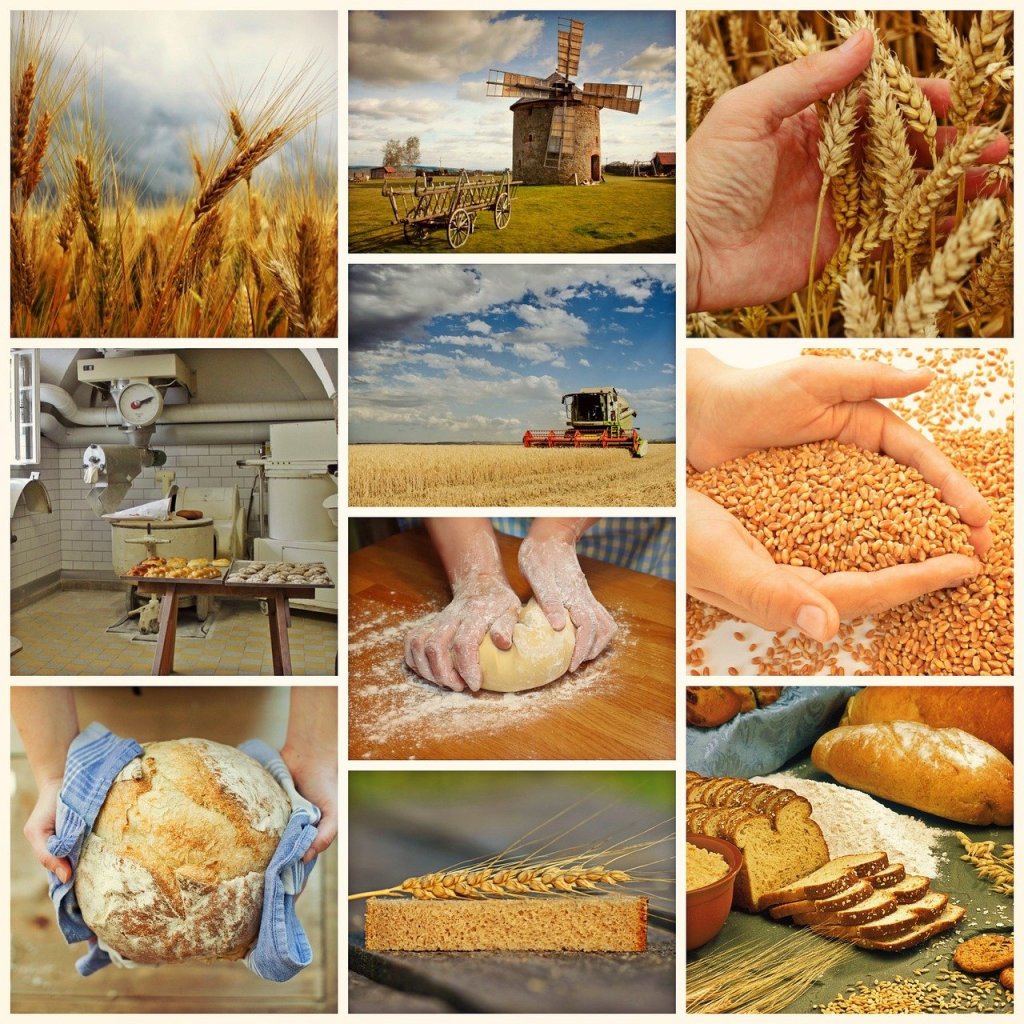
Hybrid Wheat Varieties
Present day wheat rearing practices have prompted the advancement of half breed wheat assortments that are upgraded for high return and efficiency.
While these mixtures have been effective in farming creation, they might contain more significant levels of gluten contrasted with customary wheat assortments. For people with gluten awareness or celiac illness, consuming half breed wheat items can set off unfavorable responses, including gastrointestinal uneasiness, bulging, and exhaustion. Accordingly,
it’s fundamental for delicate people to practice alert while consuming items produced using half and half wheat and to select sans gluten options whenever the situation allows
Highly Handled Wheat Products (Wheat Varieties)
Profoundly handled wheat items, like white bread, baked goods, and sweet cereals, frequently miss the mark on supplements and fiber because of the refining system. During handling, the grain and microbe layers of the wheat piece are eliminated, stripping away significant supplements like nutrients, minerals, and dietary fiber. Subsequently, these refined wheat items offer minimal dietary benefit and can add to unfortunate by and large wellbeing when consumed in overabundance.
Moreover, exceptionally handled wheat items might contain added sugars, additives, and counterfeit added substances to improve flavor, surface, and time span of usability. These added substances can additionally fuel side effects in people with gluten responsiveness or wheat sensitivities and may add to irritation and stomach related issues.
To limit the negative wellbeing impacts of profoundly handled wheat items, people ought to zero in on consolidating entire, negligibly handled grains into their eating regimen. Entire wheat items hold the grain and microorganism layers of the wheat portion, giving fundamental supplements and fiber that help stomach related wellbeing and generally speaking prosperity. Picking entire grain choices like entire wheat bread, entire grain pasta, and cereal can assist people with gluten responsiveness or wheat sensitivities keep a reasonable and nutritious eating routine while keeping away from expected triggers.

In synopsis, certain wheat assortments, for example, crossover assortments reared for high return, and profoundly handled wheat items can have negative wellbeing impacts for people with gluten responsiveness or wheat sensitivities. By grasping these likely dangers and deciding on without gluten options or negligibly handled entire grains, people can really deal with their condition and backing their general wellbeing and prosperity.
Impact on Blood Sugar (Wheat Varieties)
The glycemic record (GI) is a proportion of how rapidly a food raises glucose levels after utilization. High GIs cause a fast spike in glucose, while low GIs bring about an increasingly slow continuous increment. Entire wheat, with its lower GI, is a superior decision for glucose control, particularly for people with diabetes or insulin opposition. This is because of its higher fiber content and presence of the wheat and microorganism layers, which delayed down the breakdown of starches during assimilation, delivering glucose continuously into the circulatory system.
Food sources with a lower GI lead to a more progressive expansion in glucose levels, lessening the interest for insulin creation by the pancreas. This can assist with forestalling unexpected spikes in glucose and limit the gamble of insulin overproduction or obstruction. Entire wheat items with a lower GI likewise give longer-enduring sensations of totality and fulfillment, which can be helpful for weight the board and craving control.
In synopsis, entire wheat has a lower glycemic record contrasted with refined wheat items because of its higher fiber content and presence of the grain and microorganism layers. Picking entire wheat over refined wheat can assist people with diabetes or insulin opposition better deal with their glucose levels and backing generally speaking wellbeing and prosperity.
High-Fiber Wheat Varieties
Wheat assortments high in fiber, including entire wheat, bulgur, and farro, give various medical advantages past their healthy benefit. These grains add to worked on stomach related wellbeing by adding mass to stool and advancing normal defecations. They likewise assist with forestalling blockage and backing a solid stomach related framework by sustaining gainful microbes in the stomach.
Wheat assortments high in fiber increment sensations of completion and satiety by dialing back the discharging of the stomach and dragging out processing, prompting a more extended enduring sensation of fulfillment after dinners. This helps check hunger and forestall gorging, putting forth them important partners in weight the executives attempts.
Wheat assortments high in fiber additionally advance better weight the board by advancing satiety and managing hunger. They assist people with consuming less calories by and large, prompting potential weight reduction or weight support. Fiber additionally supports controlling glucose levels and insulin reaction, lessening the gamble of stoutness related medical problems.
Consuming wheat assortments high in fiber has been related with a decreased gamble of constant sicknesses, including coronary illness, type 2 diabetes, and particular kinds of disease. Fiber helps lower cholesterol levels, manage glucose levels, and keep up with sound circulatory strain, which are all significant variables in forestalling cardiovascular illness and diabetes.
As well as being high in fiber, wheat assortments are plentiful in fundamental supplements like nutrients, minerals, and cell reinforcements. Integrating these nutritious grains into a fair eating regimen can add to generally speaking wellbeing and prosperity while mixing it up and flavor to dinners.
Wheat and Heart Health(Wheat Varieties)
Entire wheat is a nutritious food that can fundamentally lessen the gamble of coronary illness because of its high fiber content and cell reinforcements. Its insoluble fiber, especially found in the grain layer of the wheat bit, helps lower cholesterol levels, especially LDL cholesterol, which is frequently alluded to as “awful” cholesterol. This fiber forestalls cholesterol retention into the circulation system, diminishing plaque development in corridors and bringing down the gamble of coronary illness.
Wheat likewise assumes a part in lessening the gamble of atherosclerosis, a condition described by plaque development in corridors that can prompt restricted or hindered veins and increment the gamble of coronary episode and stroke. Consuming entire wheat and other entire grains as a feature of a heart-solid eating regimen has been related with a lower hazard of creating atherosclerosis. The fiber and cell reinforcements in entire wheat help safeguard against oxidative harm to the corridors, diminish irritation, and further develop vein capability, all adding to a better cardiovascular framework.
Wheat additionally contains cell reinforcements like nutrients E and C, selenium, and phenolic compounds, which assist with killing unsafe free revolutionaries in the body, which can harm cells and add to coronary illness improvement. Integrating entire wheat into feasts and bites is a viable method for supporting by and large cardiovascular wellbeing and prosperity. In general, entire wheat is an important expansion to a decent eating regimen that can assist people with diminishing their gamble of coronary illness and related complexities.
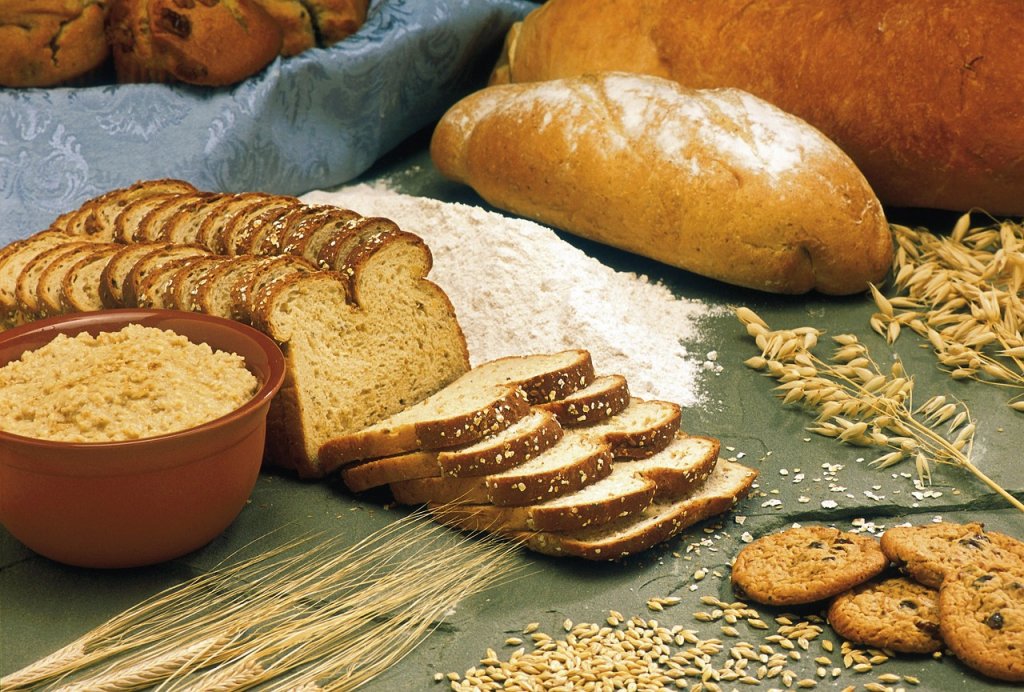
Weight Management (Wheat Varieties)
Fiber-rich food varieties, like entire wheat bread, pasta, and cereals, are fundamental for weight the board. They assist people with feeling full for longer periods, advancing satiety and supporting weight the board endeavors. Fiber retains water and extends in the stomach, making a sensation of totality and fulfillment in the wake of eating. This actual extension helps stretch the stomach, conveying messages to the mind that you are full and fulfilled.
Divisions high in fiber take more time to process and elapse through the stomach related framework contrasted with low-fiber food varieties, dialing back the discharging of the stomach and defers the assimilation of supplements into the circulatory system. This more slow assimilation and retention process manages glucose levels and forestalls abrupt spikes and crashes in energy levels, which can set off yearning and lead to gorging.
Eating fiber-rich food varieties like entire wheat bread, pasta, and grains can assist with lessening in general calorie consumption by advancing sensations of completion and fulfillment with less calories. This can prompt potential weight reduction or weight upkeep. Fiber goes about as a prebiotic, energizing the development of useful microorganisms in the stomach, which upholds in general wellbeing and prosperity.
Consolidating entire wheat bread, pasta, and cereals into a reasonable eating routine wealthy in organic products, vegetables, lean proteins, and sound fats can help people accomplish and keep a solid load over the long haul. By giving supported sensations of completion and fulfillment, fiber-rich food sources add to a more adjusted and economical way to deal with weight the board, making it simpler for people to stick to good dieting propensities and accomplish their wellbeing objectives.
Wheat and Digestive Health (Wheat Varieties)
Entire wheat fiber is fundamental for keeping up with stomach related wellbeing by advancing ordinary defecations and forestalling blockage. Insoluble fiber, plentiful in entire wheat, doesn’t break up in water and goes through the stomach related framework generally flawless, making stool gentler and simpler to pass. This forestalls obstruction, a typical stomach related problem described by inconsistent or troublesome solid discharges.
Obstruction happens when stool moves too leisurely through the gastrointestinal system, bringing about dry, hard stools that are challenging to pass. Fiber in entire wheat reduces stoppage and keep up with ideal stomach related capability. Entire wheat items like bread, pasta, and oats can help people accomplish and keep up with routineness and forestall stomach related distress related with obstruction.
Portion in entire wheat likewise fills in as a prebiotic, sustaining valuable microscopic organisms in the stomach. Prebiotics are non-absorbable starches that give fuel to probiotics, the valuable microscopic organisms that dwell in the gastrointestinal plot. By taking care of these useful stomach microscopic organisms, prebiotics support their development and movement, adding to a good arrangement of stomach microbiota.
A different and adjusted stomach microbiota is fundamental for keeping up with ideal stomach related wellbeing and in general prosperity. Fiber-rich food sources like entire wheat advance the development of an extensive variety of gainful stomach microorganisms, which keeps up with variety inside the stomach microbiota. A different microbiota is related with further developed processing, better supplement retention, and decreased chance of gastrointestinal issues like crabby entrail condition (IBS) and fiery gut sickness (IBD).
In outline, entire wheat fiber upholds stomach related wellbeing by advancing customary solid discharges, forestalling blockage, and sustaining helpful stomach microorganisms.
Organic vs. Conventional Wheat (Wheat Varieties)
Natural wheat, developed without engineered pesticides or composts, offers a cleaner elective for those worried about pesticide buildups in their food. Customary wheat cultivating frequently depends on manufactured pesticides to control irritations and illnesses, leaving deposits on the wheat grains that can persevere even in the wake of handling and washing. Natural wheat is developed utilizing regular techniques, for example, crop revolution, natural nuisance control, and natural endorsed pesticides got from normal sources, diminishing openness to manufactured pesticides and limiting wellbeing gambles related with pesticide buildups in food.

Natural cultivating rehearses focus on soil wellbeing, biodiversity, and biological equilibrium, diminishing substance spillover and damage to helpful bugs, untamed life, and soil living beings. Natural cultivating additionally advances feasible agrarian practices that help long haul soil fruitfulness and strength, adding to better biological systems and diminished ecological effect.
Picking natural wheat upholds ranchers who stick to natural cultivating principles and practices, it are supportable and ecologically mindful to guarantee that their cultivating strategies. Buyers can help boost the reception of economical agrarian practices and backing ranchers focused on delivering food together as one with nature.
Natural wheat items might offer interesting flavor profiles and nourishing attributes because of their utilization of treasure or legacy wheat assortments. Moreover, affirmed natural wheat items fulfill tough certificate guidelines set by government offices or free associations, directing the utilization of engineered inputs, hereditarily changed life forms (GMOs), and other disallowed substances in natural agribusiness.
In rundown, natural wheat offers a cleaner choice for buyers worried about pesticide buildups in their food, lessens openness to manufactured pesticides, upholds maintainable farming practices, and partakes in the expected advantages of better caliber, tasty wheat items.
Culinary Uses of Different Wheat Varieties
Different wheat assortments offer different culinary conceivable outcomes and can be integrated into many dishes to add flavor, surface, and healthy benefit. Here are a few instances of how different wheat assortments can be utilized in culinary applications:
- Bread:
Normal wheat, otherwise called bread wheat, is the most generally developed types of wheat and is ordinarily utilized for making bread, rolls, and distinctive portions. Its flexible nature and gluten content make it ideal for making an assortment of bread items, going from rural sourdough portions to delicate sandwich bread. - Pasta:
Durum wheat, with its high protein content and firm surface, is the favored decision for making pasta. Durum wheat flour produces pasta with great cooking properties, including solidness and flexibility, making it reasonable for an assortment of pasta shapes and styles, from spaghetti and penne to lasagna and ravioli. - Salads and Grain Bowls:
Old grains like spelt and farro are valued for their nutty flavor, chewy surface, and dietary advantages. These grains add profundity and intricacy to plates of mixed greens and grain bowls, filling in as a good base for different fixings like vegetables, proteins, and dressings. Spelt and farro can be cooked and served cold in plates of mixed greens or warm as a side dish, offering flexibility in culinary applications. - Baking:
Einkorn and emmer wheat, both old wheat assortments, are phenomenal decisions for baking various sweet and flavorful treats. Einkorn, known for its rich flavor and dietary advantages, can be utilized to make bread, biscuits, treats, and other prepared merchandise. Emmer wheat, with its unmistakable taste and thick surface, is appropriate for rural breads, generous biscuits, and healthy treats.
By integrating different wheat assortments into culinary manifestations, people can investigate an assorted scope of flavors, surfaces, and cooking procedures while receiving the nourishing rewards of entire grains. Whether utilized in bread, pasta, mixed greens, or baking, wheat assortments offer vast opportunities for delightful and healthy feasts that take special care of different preferences and inclinations.
Conclusion
Wheat offers various medical advantages, including stomach related wellbeing, glucose guideline, satiety, and cholesterol decrease. Entire wheat, wealthy in fiber, is an important expansion to a heart-sound eating routine, while old grains like spelt, farro, einkorn, and emmer give novel flavors and surfaces. These grains are plentiful in protein, nutrients, minerals, and cell reinforcement properties, supporting by and large wellbeing.
Notwithstanding, it’s essential to be aware of handling strategies while choosing wheat items. Entire wheat and negligibly handled assortments hold the grain and microbe layers of the wheat bit, saving significant supplements and fiber. Refined wheat items have gone through handling that eliminates these parts, bringing about items with less medical advantages.
Picking entire wheat and negligibly handled wheat assortments over refined wheat items is significant for boosting wholesome advantages and staying away from antagonistic wellbeing impacts. Focusing on entire grains in your eating routine permits you to partake in the full range of medical advantages while supporting your general prosperity. By going with careful decisions and selecting insignificantly handled wheat assortments, you can tackle the dietary force of wheat to fuel your body and sustain your wellbeing long into the future.
FAQs (Frequently Asked Questions)
- What are the main health benefits of whole wheat?
Whole wheat is rich in fiber, which supports digestive health, regulates blood sugar levels, and helps lower cholesterol. It also provides essential nutrients and antioxidants that contribute to overall well-being. - Are there any gluten-free alternatives to wheat for individuals with gluten sensitivity?
Yes, there are several gluten-free alternatives to wheat, including rice, quinoa, oats, and gluten-free flours made from almond, coconut, or tapioca. - Can refined wheat products be part of a healthy diet?
While refined wheat products may be consumed in moderation, they lack the fiber and nutrients found in whole wheat. It’s best to prioritize whole wheat and other whole grains for optimal health benefits. - What is the difference between whole wheat and white wheat?
Whole wheat contains the entire wheat kernel, including the bran, germ, and endosperm, while white wheat has been processed to remove the bran and germ, leaving only the starchy endosperm. As a result, whole wheat is higher in fiber and nutrients than white wheat. - How can I incorporate more whole wheat into my diet?
You can incorporate more whole wheat into your diet by choosing whole wheat bread, pasta, and cereals, opting for whole grain snacks like popcorn or whole wheat crackers, and experimenting with ancient grains like spelt, farro, einkorn, and emmer in your recipes.

